17 Webinar Invitation Email Examples & Templates That Work
Learn how to craft the perfect webinar invitation email using key tips, templates, and examples to boost sign-ups and engagement.
Email marketing remains one of the most powerful digital tools for car dealerships to attract buyers, increase service visits, and build long-term customer relationships. Whether you’re selling new vehicles, promoting service offers, or nurturing leads, the right email strategy can deliver measurable ROI.
In this guide, we’ll explore why email marketing is essential for dealerships, the benefits of using email tools, how to get started, creative campaign ideas, and best practices to drive results.
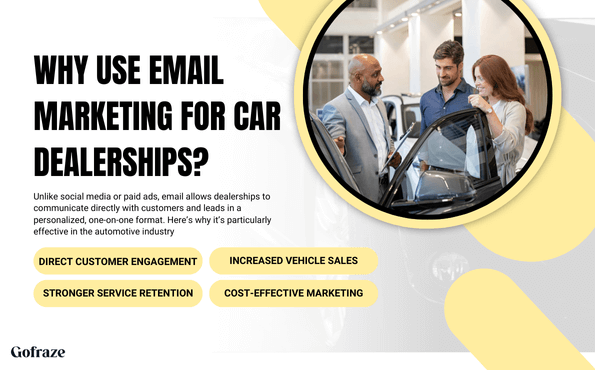
Unlike social media or paid ads, email allows dealerships to communicate directly with customers and leads in a personalized, one-on-one format. Here’s why it’s particularly effective in the automotive industry:
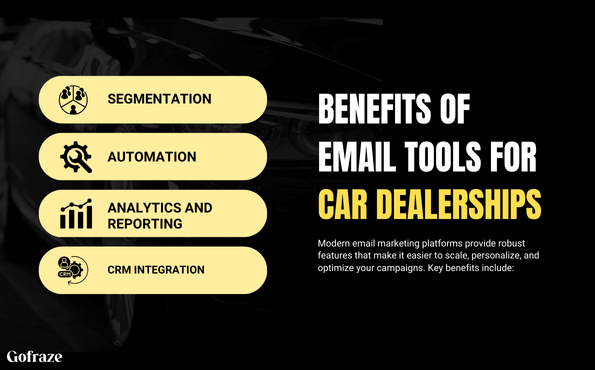
Modern email marketing platforms provide robust features that make it easier to scale, personalize, and optimize your campaigns. Key benefits include:
You can set up automated emails for:
This saves time and ensures no customer segment is neglected.
Segment your email lists based on:
This helps tailor your messaging for maximum relevance and engagement.
Most tools offer real-time tracking for:
Use these insights to refine subject lines, content, and timing for better performance.
Many email tools integrate directly with dealership CRMs, allowing you to:
This creates a seamless marketing and sales experience.
If you’re a dealership owner or marketing manager looking to implement or optimize your email marketing efforts, this section will walk you through the foundational steps to build a high-performing campaign. From selecting the right platform to automating essential messages, here’s everything you need to get started effectively.
Your email tool is the backbone of your strategy. For car dealerships, it’s critical to pick a platform that not only sends emails but also integrates with your CRM, allows behavioral triggers, and offers dealership-specific features.
What to look for in an email platform:
Popular tools:
Your success depends on a healthy, growing list of engaged contacts. For dealerships, list-building should happen both online and in-person.
Effective ways to collect email addresses:
Compliance Reminder:
Ensure every opt-in process adheres to data privacy laws like GDPR (EU), CAN-SPAM (US), or CASL (Canada). Always use checkboxes for consent and provide unsubscribe options in all emails.
Once you’ve selected your tool and started building your list, create a library of professional, on-brand email templates that reflect your dealership’s personality and tone.
Templates to Create:
Best Practices:
Automation is where email marketing starts to scale without added workload. It ensures consistent engagement, timely follow-ups, and better conversion rates — even when your team is focused on closing deals.
Essential automated workflows:
Why Automation Matters:
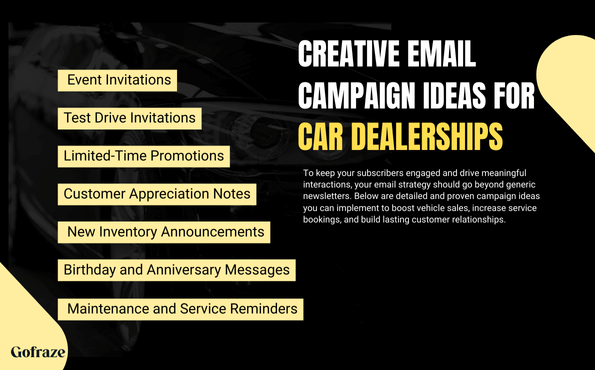
To keep your subscribers engaged and drive meaningful interactions, your email strategy should go beyond generic newsletters. Below are detailed and proven campaign ideas you can implement to boost vehicle sales, increase service bookings, and build lasting customer relationships.
When new models or trims arrive at your dealership, email is a perfect way to spread the word. These emails should highlight the vehicle’s most exciting features, availability, and why customers should be interested now.
What to Include:
Tip: Personalize these emails based on past buyer interest (e.g., “We thought you might like the new 2025 Toyota Camry”).
Sales-driven campaigns are essential to create urgency and drive action. Promote discounts, manufacturer incentives, clearance sales, or low-interest financing.
What to Include:
Tip: Use urgency-driven subject lines like “Ends Sunday: Up to $4,000 Off SUVs!”
A test drive is often the turning point in the buyer’s journey. Send email invitations to qualified leads encouraging them to schedule a visit.
What to Include:
Tip: Include testimonials from customers who loved their test drive experience.
Retain customers long after the sale by keeping them engaged with helpful service reminders. These can be automated based on mileage, vehicle age, or last visit.
What to Include:
Tip: Make it easy to reschedule or book in one click with mobile-friendly forms.
Whether you’re hosting a car launch, customer appreciation day, or holiday celebration, events build emotional connections with your brand. Invite your community to attend via engaging email campaigns.
What to Include:
Tip: Include an “Add to Calendar” button to boost attendance.
Strengthen relationships with past buyers by sending thoughtful, non-promotional emails. These can be thank-you notes, service discounts, or loyalty offers.
What to Include:
Tip: Keep it genuine. Avoid heavy sales language in appreciation emails.
Celebrating milestones like a customer’s birthday or car purchase anniversary adds a personal touch that increases brand loyalty and goodwill.
What to Include:
Tip: Automate these emails using your CRM and schedule them yearly to keep the relationship alive.
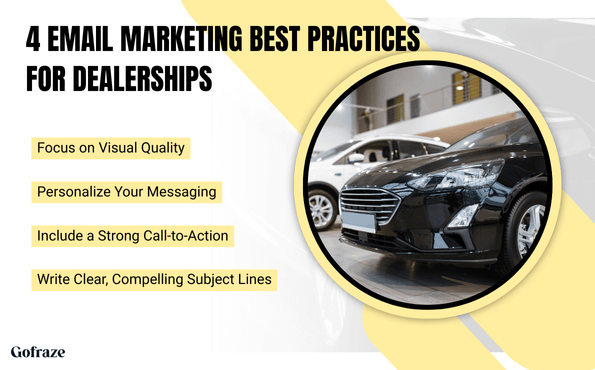
While tools and templates are important, the true success of your dealership’s email marketing campaigns hinges on following tried-and-true best practices. Below are four foundational strategies that will help you improve open rates, click-throughs, and conversions from your email campaigns.
Generic emails are easy to ignore. Personalized emails, on the other hand, show the recipient that you understand who they are and what they need — making your content far more relevant and engaging.
How to personalize effectively:
Why it matters:
Personalized emails have significantly higher open and click-through rates. According to HubSpot, emails with personalized subject lines are 26% more likely to be opened.
Pro Tip: Use dynamic fields in your email platform to insert names, vehicle models, or previous purchase info automatically.
The subject line is your first (and often only) chance to get someone to open your email. A great subject line communicates the value of the email clearly and entices the reader to take a closer look.
Tips for effective subject lines:
Good examples for dealerships:
Why it matters:
Even the most well-designed email is useless if it’s never opened. Crafting strong subject lines is essential to boosting open rates and improving overall campaign effectiveness.
Pro Tip: A/B test your subject lines to see what resonates best with your audience (e.g., “Book Your Test Drive Today” vs. “Drive the All-New 2025 Model First”).
Email is a visual medium, especially in the automotive world where style, design, and appeal are key decision drivers. High-quality images and clean layouts not only attract attention but also convey professionalism and brand trust.
How to enhance visual quality:
Why it matters:
Poor-quality images or cluttered layouts can hurt credibility and lead to unsubscribes. A visually clean and branded email is more engaging and easier to read, increasing the likelihood of conversion.
Pro Tip: Use visual hierarchy to guide the eye — place the most important content or CTA above the fold and make use of bold text, dividers, and whitespace.
Every dealership email should lead the recipient toward a clear and specific next step. A strong CTA tells them exactly what to do and removes any guesswork.
CTA examples that work:
Best practices for CTAs:
Why it matters:
Without a CTA, even the best email can fall flat. A compelling CTA boosts click-through rates and helps you achieve your campaign goals — whether it’s scheduling a test drive or increasing service appointments.
Pro Tip: Use one primary CTA per email to avoid confusion and decision fatigue.
Discover powerful tools and templates designed to help auto dealers attract and convert more leads effortlessly with Gofraze.
Email marketing can help car dealerships do more than just move inventory — it can create long-term relationships, increase customer lifetime value, and strengthen brand loyalty.
By using the right tools, delivering relevant content, and following best practices, dealerships can drive consistent traffic, boost service appointments, and close more deals — all from the inbox.
Ready to put these strategies into drive? Start your next campaign today and watch your dealership grow.

Learn how to craft the perfect webinar invitation email using key tips, templates, and examples to boost sign-ups and engagement.
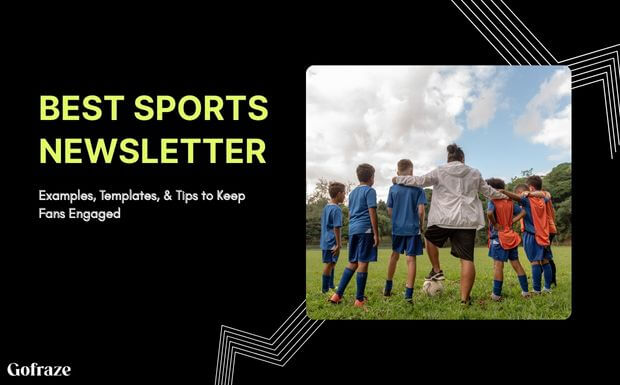
Discover winning sports newsletter examples, essential elements, and expert tips to craft high-impact email campaigns your fans will love.
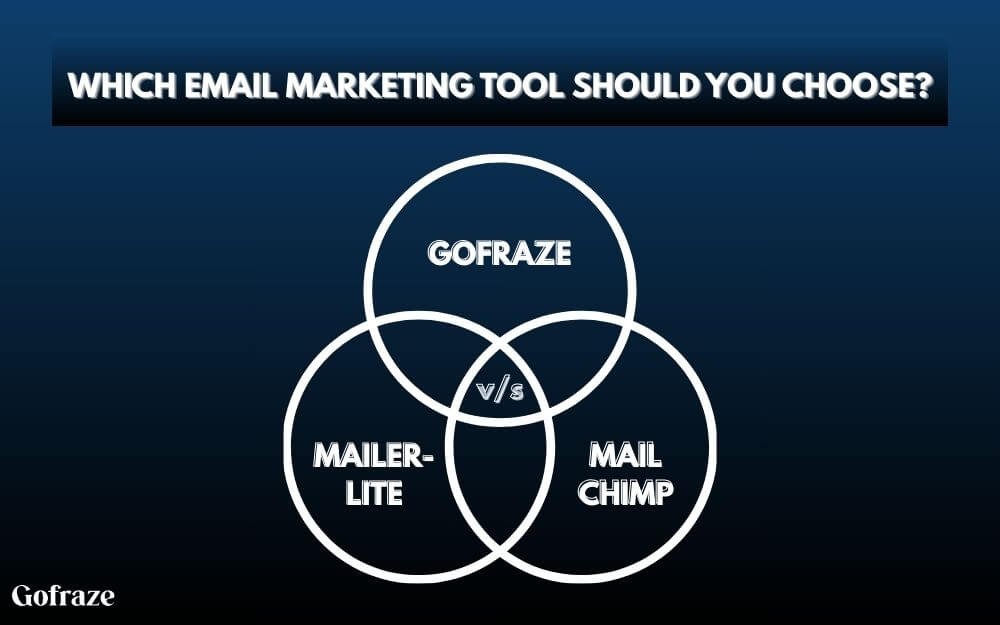
Compare MailerLite, Mailchimp, and Gofraze side by side. Explore features, pricing, user reviews, and the best pick for your 2025 email marketing needs.

Get unlimited forms that turn your traffic into real subscribers — totally free
Start now - free forever